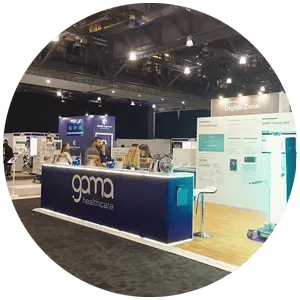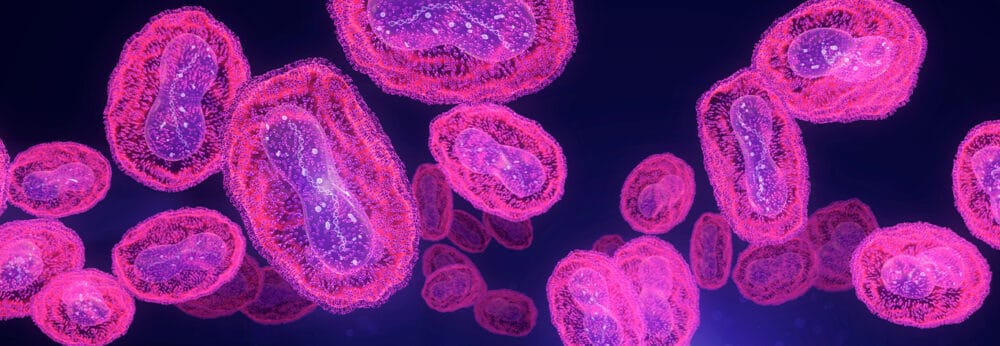Posted
7th December 2018
Events and Exhibitions

We enjoyed the recent Healthcare Infection Society’s 2018 conference in Liverpool, and thought we’d share a few highlights. You can view all of the submitted abstracts here and the invited abstracts here. The role of the environment in the transmission of HCAI was a strong theme throughout the conference, with key speakers discussing the relative importance of contaminated surfaces and water in transmission compared with other routes. There was even an entire submitted oral presentation session on water-related transmission of Gram-negative bacteria! Some highlights include:
- An intervention study from University Hospital Birmingham evaluated the impact of introducing the one-step Clinell Universal Wipes (which both clean and disinfect) to replace a two-step detergent wipe cleaning followed by alcohol wipe disinfection for nurse-led cleaning tasks. The change in disinfection approach was associated with a significant 55% reduction in the rate of MRSA acquisition (from 20.7 to 9.4 per 100,000 patient bed days; p <0.005).
- A collaboration between Chinese and British scientists has evaluated the residual impact of the disinfectant formulation extracted from Clinell Universal wipes (abstract #103). The quaternary ammonium compound based disinfectant extract from the wipes achieved a >6 log reduction oncoli and S. aureus dried onto metal and plastic surfaces for at least 24 hours, whereas chlorine exhibited no residual activity. This is one of the first studies to quantify the residual impact of a QAC based disinfectant. These findings are supported by a recent study which reported that Clinell Universal Wipes exhibited residual antimicrobial activity for >6 hours in a clinical setting.
- Work from the University of Huddersfield investigated the effectiveness of disinfectants for tackling surfaces contaminated with Candida auris (abstract #241). Clinell Universal wipes were pitted against other disinfectants (PHMB, benzalkonium chloride (BZK), and DDAC) in laboratory tests. The Clinell wipes achieved a >4-log reduction against all of the strains of auris tested, whereas the other disinfectants were less effective. This highlights the importance of disinfectant formulation, illustrating that the Clinell formulation for Universal Wipes extracts the best performance from its constituent chemicals.
- A team from University Hospitals Birmingham investigated the environmental impact of introducing for terminal disinfection in a haematology ward. 15 rooms were tested for surface contamination with the mean cfu being 40 cfu prior to cleaning, 16 cfu after cleaning, and 0.3 cfu after cleaning. UVC offered a rapid and efficient way to improve the standards of environmental hygiene at the time of patient discharge.
- An academic collaboration between Cardiff University and Gama reports the findings of research work into methods to tackle dry surface biofilms (abstract #86). The efficacy of 12 biocides and hydrogen peroxide vapour (HPV) was evaluated. Peracetic acid was the only biocide able to achieve a >6-log reduction on the biofilms, and 10/13 biocides failed to prevent transfer of bacteria from the biofilms following exposure. Novel approaches to disinfection are necessary to tackle dry surface biofilms effectively.
- Research work performed by scientists from UCLH and Great Ormond Street found that surface contamination was correlated with height in the room, with lower surfaces tending to be more heavily contaminated (abstract #182). They also performed extensive observation of cleaning practices, finding that cleaning methods were inconsistent between staff groups, and that confusion of cleaning roles was evident, illustrating the need for clear delineation of cleaning responsibilities between different staff groups. The same research group also performed a systematic review of surface sampling methods (abstract #216). The literature provided incomparable and contradictory findings, highlighting the need for carefully controlled studies to inform environmental sampling methods.
- A study from researchers in Sheffield and Bath evaluated the acceptability of three difference approaches to antibacterial skin washing to reduce the risk of infections associated with peripheral cannulae (abstract #158). Interestingly, there were differences in staff and patient preferences (with patients preferring Clinell wipes). However, patient and staff preferences need to be balanced against cost and effectiveness when choosing the optimal antibacterial skin washing approach.
- The conference featured a debate on the relative importance of antibiotic use and the acquisition ofdifficile spores in driving C. difficile infection. Prof Mark Wilcox argued that antibiotics are the most important driver, and Dr Jon Otter argued that the acquisition of C. difficile spores is more important. At the start of the debate, two thirds of the audience agreed with Mark, but after hearing all the arguments, two thirds of the audience agreed with Jon! This underlines the importance of interrupting the spread of C. difficile spores, which requires a focus on improving environmental hygiene!
The conference also featured a debate on decontamination and environment: high vs low technology. Dr Curtis Donskey argued for high technologies, and Prof Stephanie Dancer argued that low technologies will always be required. Dr Donskey stressed the importance of manual cleaning before the deployment of automated systems, arguing that the speed, efficacy and non-corrosive nature of such systems made them an attractive adjunct to manual cleaning. Dr Donskey also discussed the results from the BETR-D study and evidence for automated systems in reducing rates of healthcare associated infections (HAIs), when compared to traditional methods. Prof Dancer argued that we can use all the ‘hot air’ high technologies available but they can’t physically remove dirt and that cleaning is essential with one wipe, one site, one direction and elbow grease. Prof Dancer presented evidence on numerous ‘cleaning’ studies and used the latest evidence from the REACH cleaning initiative study to show the impact on MRSA and VRE rates. At the end of the debate Dancer ‘wiped’ the smile of Donskey’s face, because the audience voted for low technology! If you’d like to hear more about any of the above, please get in touch.
SHARE THIS ARTICLE
Tags
Latest News
Celebrating 20 Years of GAMA Healthcare: Our Story
This month, GAMA Healthcare celebrates 20 years of helping prevent…
Norovirus: Understanding its transmission and prevention in the UK
Introduction Norovirus is recognised as the leading cause of viral gastroenteritis…
Clean Between to Reduce Healthcare-Associated Infections
Healthcare-associated infections (HAIs) are a significant concern for healthcare facilities…
Mpox: emergence of a new threat
A new threat related to mpox is emerging, in the…




